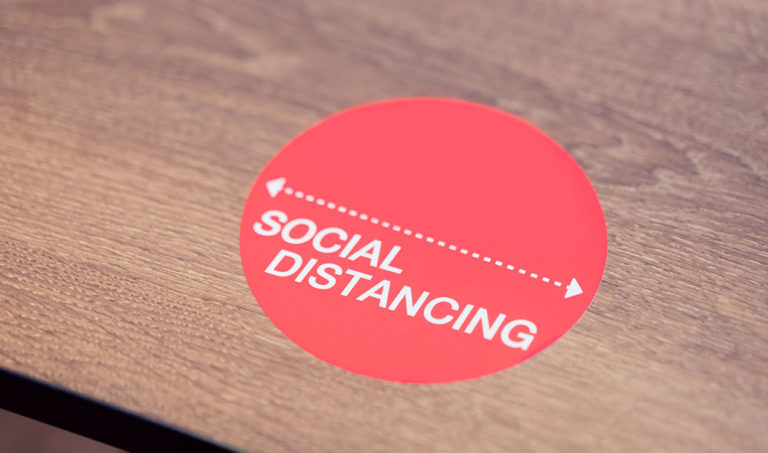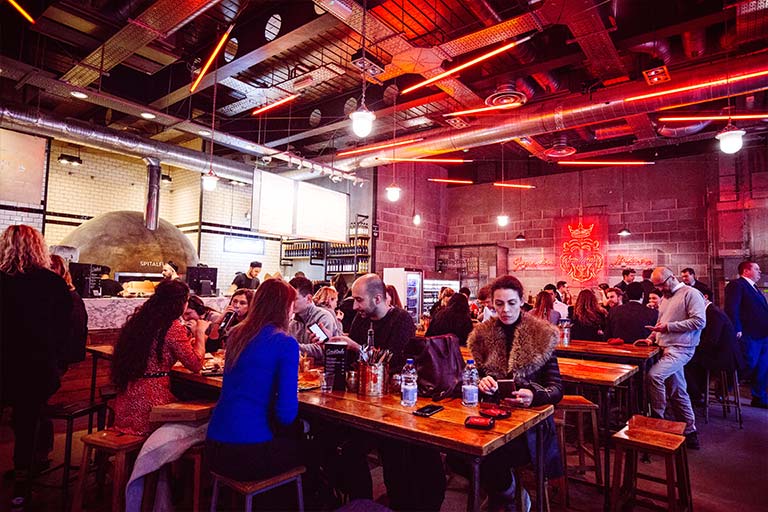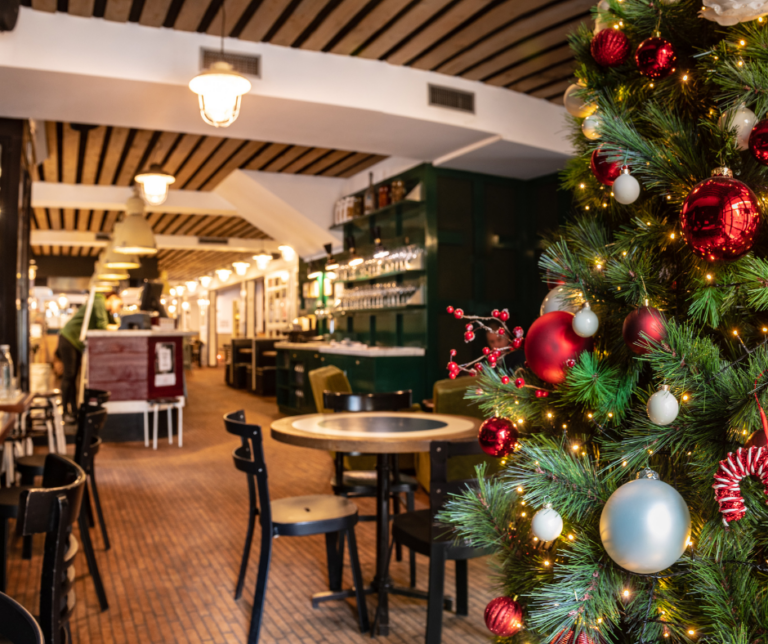Introduction
Forced closures, impossible footfall spikes with Eat Out to Help Out; and an imminent Brexit with the anticipated rise in food costs and labour concerns, is forcing venues to think creatively and harness built-in EPoS tools to stay in business.
These new challenges for hospitality operators and constant political changes are something no operator could have predicted. As winter approaches and new restrictions are placed over us, for many the outlook may look bleak.
But for others, the changes they have made through creative thinking, a focus on profit and adapting to new customer sensitivities and trends, things are looking a lot brighter.
In this blog, we look at how operators are using the power of EPoS and hospitality tech to drive revenue and close profit gaps. Also, the many creative ideas venues have come up with to create great guest experiences in the new world of social distancing.
Hospitality’s fight for survival
What the pandemic has done is to force hospitality venues to face challenges head-on and with haste. Not all the challenges being faced by hospitality are new.
Take for example the profit squeeze caused by third-party apps such as Just Eat, which have burdened many restaurants, QSRs and takeaways for a long time. Or the legal pressure to ensure every customer is aware of allergens. Not to mention, the need for many to increase revenue through better stock control, food wastage, loyalty programmes and upselling.
Addressing new Covid challenges and finally facing long-standing challenges has meant the creation of new business models to achieve a leaner, safer and more profitable way to operate.
Finally, hospitality is harnessing the power of technology on a bigger scale than ever before – advanced EPoS platforms, self-serve digital ordering and apps. All of which are enabling reduced table staff, profit-focused menus and an overall more lean and efficient operation.
Colliding of new and old challenges
Some of our ongoing challenges have been exaggerated by the pandemic – high staffing costs, low-profit margins and rising food costs, home dining/takeaway trends, making change imperative through technology and new hospitality experiences.
Gaining customer confidence through social distancing, hygiene and trace & track at our venues is essential. We are now witnessing an operational and customer experience shake-up as new ventures and concepts use technology and creativity to attract customers back to venues, whilst looking for new ways to drive revenue.
What are operators doing to overcome these challenges?
Operators across the UK are reinventing what they do and introducing new business models to survive the toughest legal, economic and social challenges ever experienced before. From simple tweaks, outdoor space conversion, food and drink deliveries to digital ordering, hospitality operators across the UK are drastically changing what they do in the fight to survive.
Despite the plague of media pessimism, there will be winners just as there will be losers. Maybe our industry needed this tragedy to reset itself in line with changing consumer trends and omni-channel retailing.
3 ways to identify opportunities for cost savings and increased revenue
Beyond reducing staffing and/or hours of operation, if you have a comprehensive EPoS system, now is the time to make the most of all the advanced features to optimise your business costs and maximise revenue.
1. Analyse EPoS data for food cost savings
It is surprising how much you can save by getting to grips with the profit potential from each product. Some operators are making significant savings simply by running EPoS reports on product sales and profit margins for example.
Pulling recent purchase history from your EPoS system will quickly help consolidate your menu for increased profit margin, reduced wastage and less kitchen staffing. Look at:
- Which menu items you can temporarily eliminate? (those ordered less frequently)
- Which meals your most loyal guests tend to prefer?
- Which meal items hold the most profit potential?
2. Building your socially distanced floor plan
Mandatory two-metre social distance means not only reduced table covers but it also requires more thought than many people first realised.
Many venues run the risk of looking empty and uninviting. EPoS systems such as the pointOne platform can allow you to easily change the table plans, along with a quick status of the tables based on where they are in the dining cycle e.g. just seated, waiting to order or ordered.
Key questions to consider:
- Is there room between tables for staff to move easily without knocking customers, especially with food and drink trays?
- Do you have seats set aside for walk-in guests to wait? And where should this seating be in relation to reservation guests?
- Do you have a way to track the status of each table? Knowing which tables just sat down, who has ordered dessert and who is close to paying can help you manage your seating for maximum covers.
3. Maximise your reservations and optimise your seating
Most operators today have a built-in reservation system within their EPoS platform. For example, when you optimise your reservations within the pointOne EPoS system, you automatically optimise your seating with it.
Your customers can book open tables at any time through your website, a reservation app, or even Google reservations and Facebook.
Reservation reminders
With more and more guests making reservations in plenty of time to snatch one of the reduced numbers of tables, you can’t afford for them to not turn up.
If guests are making a reservation, give them an option to add custom reservation notes. This will help staff be prepared and reduce time dealing with some customer requests if they can be sorted before arrival.
Reservation apps such as ResDiary, enable you to have a waitlist to quickly contact customers by SMS and email when previously reserved tables come free. You can even take pre-orders to help optimise stock and overall kitchen management and staffing. Table and Yield management tools will also give you helpful insights to maximise efficiency.
Are digital ordering and self-serve the new norm?
Since McDonald’s launched its popular self-serve kiosks in 2015, successfully followed by other big brands and independents such as Tossed, digital ordering has been a hot topic within hospitality.
As we fight the constant economic, political and social challenges presented by the pandemic, the most popular and effective way to beat reduced staffing and customer contact, has been the adoption of self-serve technology in the form of mobile order & pay, kiosks and table kiosks.
Case study: Jolly Good Pubs
We recently spoke to our customer and good friend, Tom West of Jolly Good Pubs to find out how the successful, independent pub chain is tackling the new environment and continuing to deliver the service and ambience it is famed for.
“When we re-opened, we were delighted to be getting back to work, seeing our customers and teams. Initially, we worried about infections, outbreaks and the rules, but we have been able to embrace them as an everyday service and used them as an opportunity to pivot the business slightly.
“Our pubs are known for their busy bustling ambience, with crowded bars and cosy seating. Social distancing changed that, so we had to reinvent the theatre we create in the pub. Rather than four deep at the bar, a more European model was adopted.
“It allowed our teams’ personalities to shine when seating the tables. Believing in our teams to be the life of the pubs has given them the confidence we are all working together. When we needed to make changes, they have been helpful and understanding.
“Whilst we all rely on staff in our sector, adapting to the new boundaries of trust in one to make the right choices has made the relationship between employer and employee more transparently interlocked. We’ve always had a strong relationship with our teams, our low staff attrition rate is evidence of our success with that, but now the relationship feels like we are truly in this together.”
Like many food and beverage outlets, Jolly Good Pubs has had to apply tactical initiatives to increase their profit margin and accommodate for a halved seating capacity. Such steps have included reducing the labour cost of table service by the introduction of digital ordering through pointOne’s mobile app.
In other areas, the pub chain has reduced menu offerings, stock holdings and made other smaller procedural changes.
Tom explains, “Technology has played a key role in these changes. We integrated an online ordering app allowing customers to order at tables reducing labour. This meant we had to retrain the teams to handle other tech-related questions, which proved fun.
“This service was initially difficult to get the customers to buy-in, but once we got the pitch right, our customers appreciated how much quicker it made our service. In one site we integrated a self-service kiosk from pointOne’s partner Kurve. This proved popular with customers who didn’t want to register online. We will be looking at more of these points as the business grows.
“We also extended our use of our pointOne EPoS system allowing us to reduce stock holdings, making savings on the cash tied up in stock. These changes are here to stay and have helped the profitability of the business going forward, reducing wastage across the board.
“Our integrations with tech have helped reduce the running costs of our business. As many of the trading periods and costs are fragmented at the moment, it’s difficult to quantify and formulate a forecast in such a fluid landscape.
“Brand loyalty and familiarity between our venues have meant customers can move between the pubs and use the tech easily. In fact, the more mature end of our customer base is determined to learn this technology whether it is a kiosk or online ordering, they like the challenge. This shows that the customer journeys have been well thought out and the intuitive layouts are working.”
Case study: Lollipop bar and experience venues
With the Government introducing temporary takeaway licenses to pubs and dining outlets, we’ve seen a surge of new operator takeaway services from simple phone orders to the introduction of online and mobile ordering.
But for those creative thinkers like Lollipop, re-thinking how they do things better in the current climate, whilst maintaining brand values, has opened up a fresh approach to bar and experiential venue operations – both for the short and long term.
Founder Sebastian Lyall says that to retain staff and to continue the business post-Covid-19, they moved to ‘bar-quality cocktails’ that arrive with garnishes and a little something to remind consumers that they are from Lollipop. (imbibe). “With the box of cocktails, we send you a game,” says Lyall.
Explaining why he decided against virtual experiences, he says Lollipop’s mandate is not to create experiences but to explore what a bar or restaurant can be.
“We are trying to innovate around the customer journey. For example, Bletchley is a combination of escape room and bar – the idea behind it is to innovate what a menu means so the bar doesn’t have a menu – we give you a game which helps us to understand your taste profile,” he says.
Granted, bottled cocktails aren’t new, but Lollipop has made the experience into ‘more of a story’. Lyall says drinkers that solve the game and email the company go on to receive ‘a little surprise’. Lollipop sold 250 boxes of cocktails in the first three days.
Lollipop takes advanced bookings for the venues, paid upfront. Lyall says that only 5% of bookings have been cancelled, meaning he was able to still pay staff full salaries in March. ‘Without that kind of loyalty, we would’ve gone bankrupt,’ he says.
Lollipop’s long game
Lyall also says the cocktails have inspired a longer-term opportunity with an e-commerce drinks business.
“We are talking to trade suppliers who don’t have a shop front – smaller wine suppliers who now have zero business because they supply bars. On the other hand, some consumers are craving wine but can’t get wine. We become the aggregator. We give them a shopfront so we can engage our community by selling their wines but with a Lollipop twist.”
Case study: D&D London
Unable to invite customers into their venues, restaurants across the world have pivoted to takeaway. For D&D London, the challenge was to make sure this experience was on par with what customers of hip haunt Bluebird were used to.
Based in Chelsea, the restaurant has continued to benefit from decent levels of residential footfall compared to D&D’s more centrally located venues. In June, the team decided to make the most of this and set up a rotisserie outside the restaurant, creating a sense of theatre and letting the smell waft down the King’s Road.
In the three weeks to July 4, Bluebird generated an average of £20,000 a week from takeaways. Michael Farquhar, D&D’s operations director, says: “We needed to start generating revenue, but it was also about understanding the appetite.”
Of the seventeen D&D restaurants to reopen on July 4, Michael says Bluebird has been the most successful. The takeaway service “created an awareness. It meant we could talk to our guests face to face and tell them we were going to reopen.”




